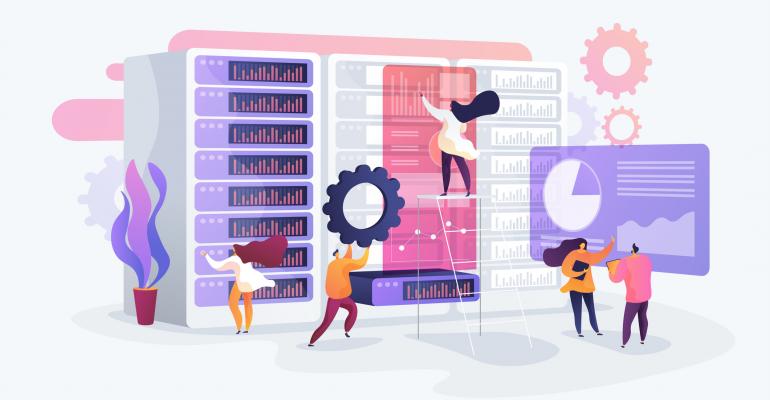The pandemic has put the value of remote data center management and monitoring tools on display. Use of this category of data center technology has gone up substantially this year, according to data center providers and industry analysts. And, according to them, it’s here to stay.
Data center providers are using the technology to both help customers with limited physical access to their infrastructure and reduce their own personnel’s foot traffic in their facilities. On-prem enterprise data center operators have also turned to remote management of their technical infrastructure.
"If they need operational support, they can save time and money by using a portal to request on-demand remote hands services, such as server reboots, telecommunications support, rack and stack, OS loads, and tape back-ups," Mitch Fonseca, VP of data center products at Cyxtera Technologies, told DCK.
QTS Realty Trust, which in recent years has been investing heavily into a software platform for managing its infrastructure, has seen a spike in customer requests for remote-hands services through the platform. Other large data center providers have (predictably) also reported high demand for remote hands this year.
"It's not even a question," Brent Bensten, CTO of products at QTS, told DCK. "We've seen all our stats go up."
QTS has done well sales-wise during the pandemic, despite worries early on that enterprises would be reducing or postponing infrastructure spending. The last quarter was one of the best the company’s ever seen. Like its largest competitors, QTS’s sales team has switched to virtual data center tours for prospective customers.
The timing of its investment in remote management capabilities proved fortunate in the crisis. The amount of time an average customer spends on its service delivery platform has doubled since the start of the pandemic, according to Bensten.
Enterprise Data Centers Feel Double the Pressure
In on-prem. enterprise data centers, COVID-19 has driven the need for remote access “to the max,” Holger Mueller, an analyst at Constellation Research, told us.
Companies have to let their staffers work remotely or risk infections, he said. The other on-site option is "to isolate their teams for long shifts;” enterprises in “some extreme cases are doing that."
Fortunately, many data centers already had the technology available – it was just going unused.
"It was the way of working, traditions that have held enterprises back," Mueller said. "Enterprises should have equipped their operators for remote access even before, for better work-life balance, easier supervision, etcetera."
Of course, there are some tasks that cannot be done remotely, via software. Things like installing hardware in a data center, or moving it from rack to rack, will have to be done by hand for the foreseeable future.
"On the whole, the data center sector has pulled through unscathed, largely because it was prepared for a pandemic emergency scenario," said Daniel Bizo, senior research analyst for data center services and infrastructure at 451 Research, now part of S&P Global Market Intelligence.
Robert McFarlane, principal data center designer at Shen Milsom & Wilke, was teaching an online course in data center facilities at Marist College's Institute for Data Center Professionals at the time the pandemic first hit.
"I have students from all over the world, data center professionals who are managing, in many cases, big data centers," he said. "I had to extend my course, because they were so busy with the sudden expansion of requirements, that they couldn't keep up with the class."
The big problem, he said, was that many data center managers were facing coronavirus-related restrictions themselves.
"It's like many of us with our offices – people were not allowed to go into their own buildings," he said. "So, it was very important to be able to manage remotely."
Meanwhile, many of them were experiencing exponential growth in demand, because everyone else now had to work remotely. "It was all suddenly online."
According to a survey released by IDC in August, 78 percent of companies said the pandemic impacted their data center resources through things like limited physical access and higher demand from business applications and work-at-home users.
"And we did see that 40 percent were limited in their ability to interact with their infrastructure," said IDC analyst Jennifer Cooke. "Even though data centers were considered essential resources, for many organizations they were in their office buildings or in other locations considered non-essential."
‘A New Norm’
The data center industry isn't likely to go back to the old ways of managing its infrastructure, some experts say.
Remote access reduces costs, improves uptime, and ensures that data centers are better able to weather future disasters, whatever they may be.
"The pandemic forced people to try it, which forced people to become comfortable with it, and we feel it's become table stakes for data centers," said QTS Realty's Bensten. "This is the beginning of a new norm."





